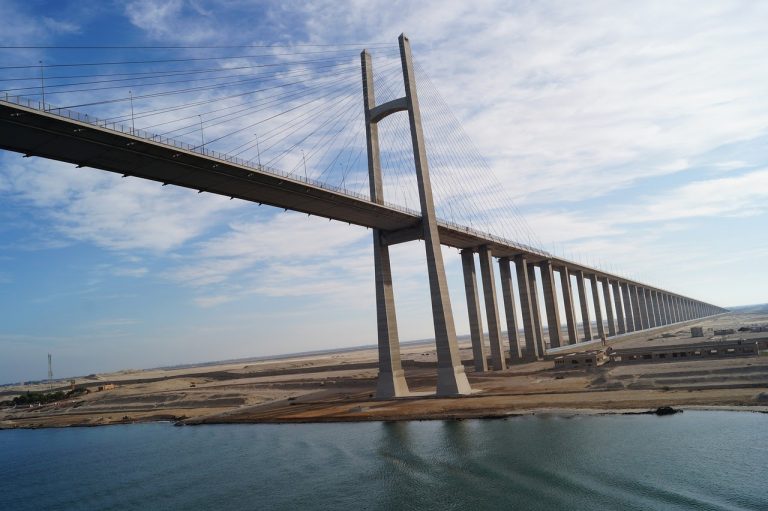A container ship recently ran aground in the Suez Canal in Egypt, blocking all traffic across the vital trade waterway. Now, it seems as if the ship might remain in that position for several weeks, creating more chaos in the global shipping system that has been under additional stress due to the COVID-19 pandemic. The ship, MV Ever Given, carries cargo between Europe and Asia and has its stern lodged against the canal’s western wall while its bow is touching the eastern wall.
Salvage teams are currently trying to free the Panama-flagged vessel. One of the largest cargo ships globally, the MV Ever Given is almost as long as the Empire State Building in New York is high, with a length of nearly 400 meters. Dutch firm Boskalis is one of the companies assisting in free the vessel. CEO Peter Berdowski warned that the effort might not end anytime soon.
“We can’t exclude it might take weeks, depending on the situation… it is not really possible to pull it loose… It’s like an enormous beached whale. It’s an enormous weight on the sand. We might have to work with a combination of reducing the weight by removing containers, oil, and water from the ship, tugboats, and dredging of sand,” Berdowski told local news station Nieuwsuur.
About 237 large vessels are estimated to be stuck in the ‘traffic-jam along the waterway by Friday. Salvatore R. Mercogliano, former merchant mariner and associate professor of history at North Carolina’s Campbell University, stated that around 50 ships on average go through the Suez Canal daily. With the canal closed, container and fuel tankers won’t supply food, fuel, and manufactured goods to Europe and the Far East.
According to shipping journal Lloyd’s, almost $9.6 billion worth of goods is transported through the canal daily, with $5.1 billion westbound. Around 10 percent of global trade flows through the Suez Canal. The tankers stuck around the Canal also have to face the danger of piracy.
Success
You are now signed up for our newsletter
Success
Check your email to complete sign up
Joshua Hutchinson, general manager of ARX Mouldings, a UK-based maritime security consultancy, calls these ships “sitting ducks,” highlighting the extreme danger they are in. According to Lloyd’s List, a London-based shipping-news journal, the loss is calculated at about $400 million for an hour.

“Every day there’s another backlog, these ships are sitting there at risk… It’s the largest traffic jam the world is about to see. If you’re a static ship, you’re obviously facing a clear threat… There’s really an opportunity. There are some high-value targets, and we’re not just talking about container ships but cargo… The biggest fear of any vessel is remaining static. That’s going to start raising huge concerns for these shipping companies,” Hutchinson told the Independent.
The Suez Canal crises impact on the US
Mark Zandi, the Chief Economist at Moody’s Analytics, states that the Suez Canal blockage won’t affect the United States much unless the situation continues for several weeks or months. Much of the finished products from Asia are shipped to the U.S. through the Pacific. At best, the canal blockage could push up oil prices. And that too, only by pennies per barrel rather than dollars.
The blockage is also a reminder of the importance of energy independence to America. Around 4 percent of imported crude oil and 9 percent of refined oil products are transported through the canal. A major disruption can quickly drive up prices.
During the Donald Trump administration, a significant push was given to explore America’s fossil fuel assets to make the country energy independent. However, President Joe Biden is pushing back at such efforts, with his reasoning to combat climate change.
Follow us on Twitter or subscribe to our email list














